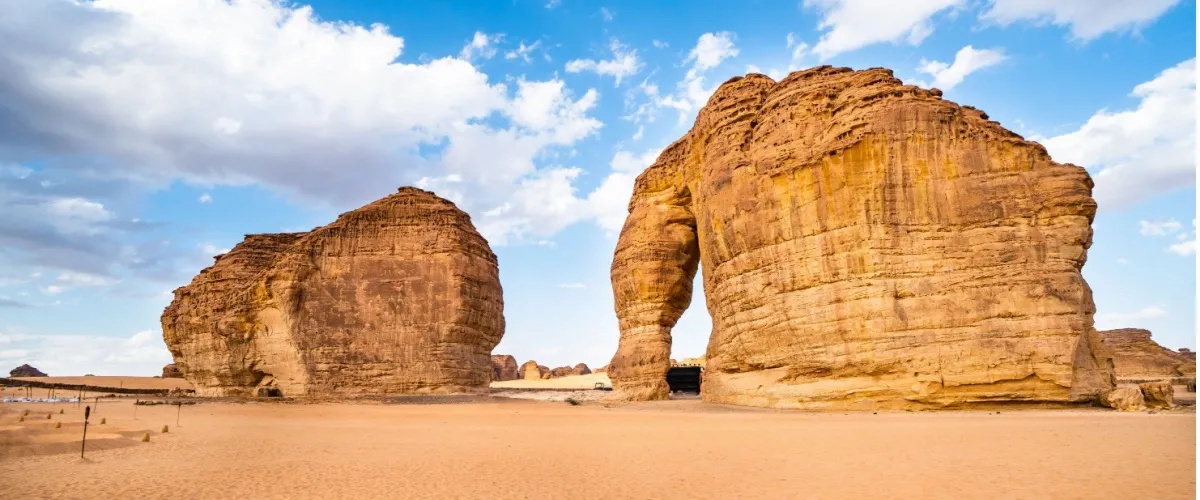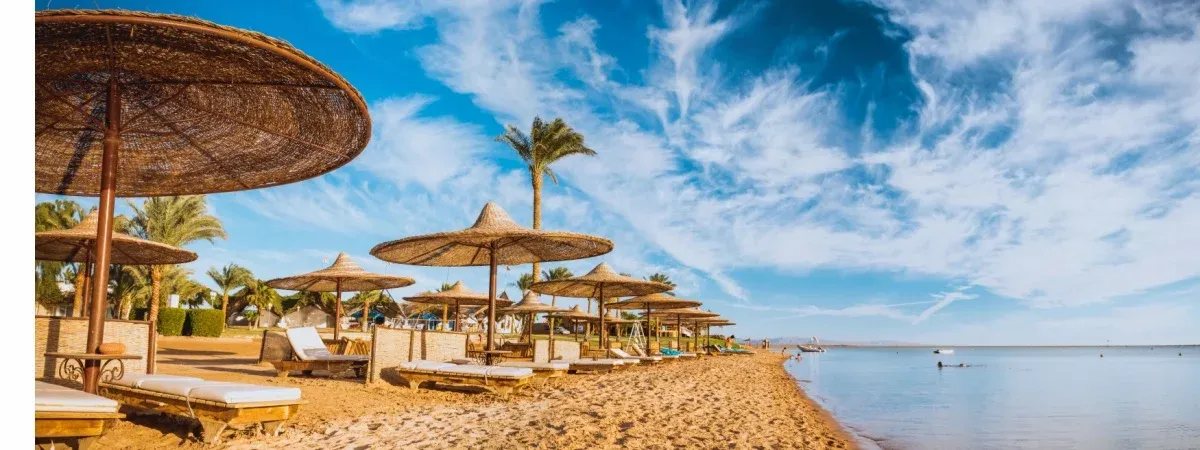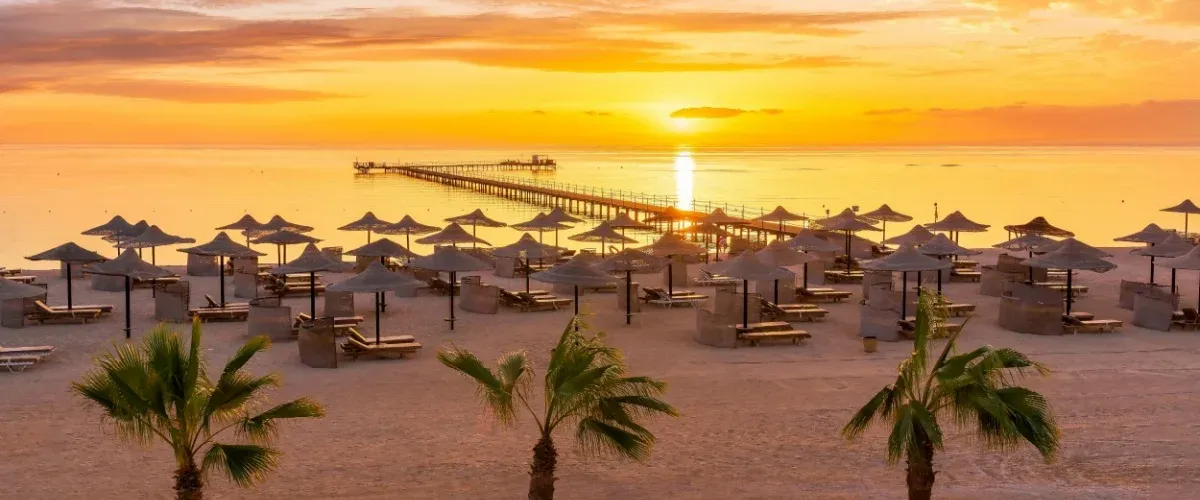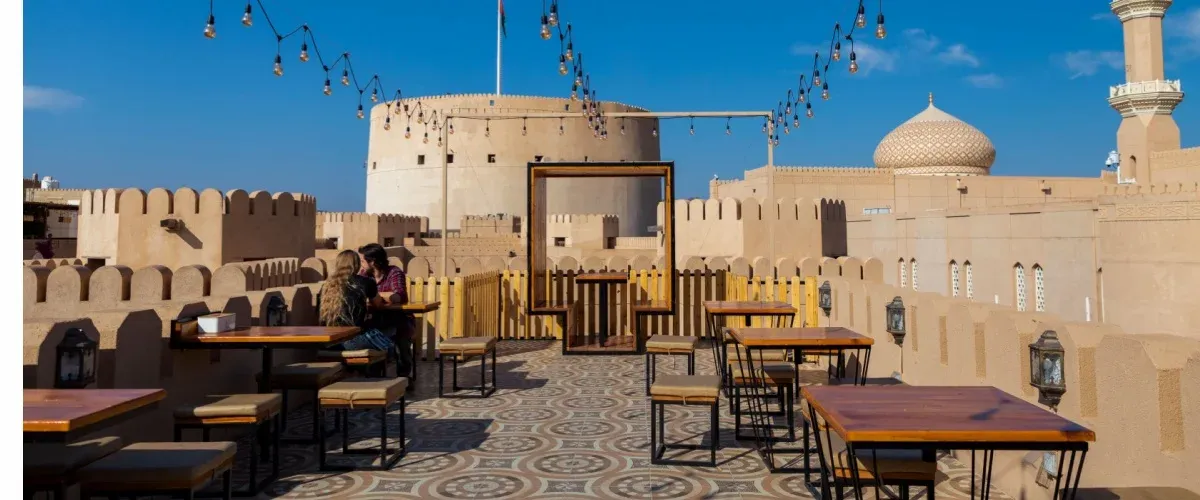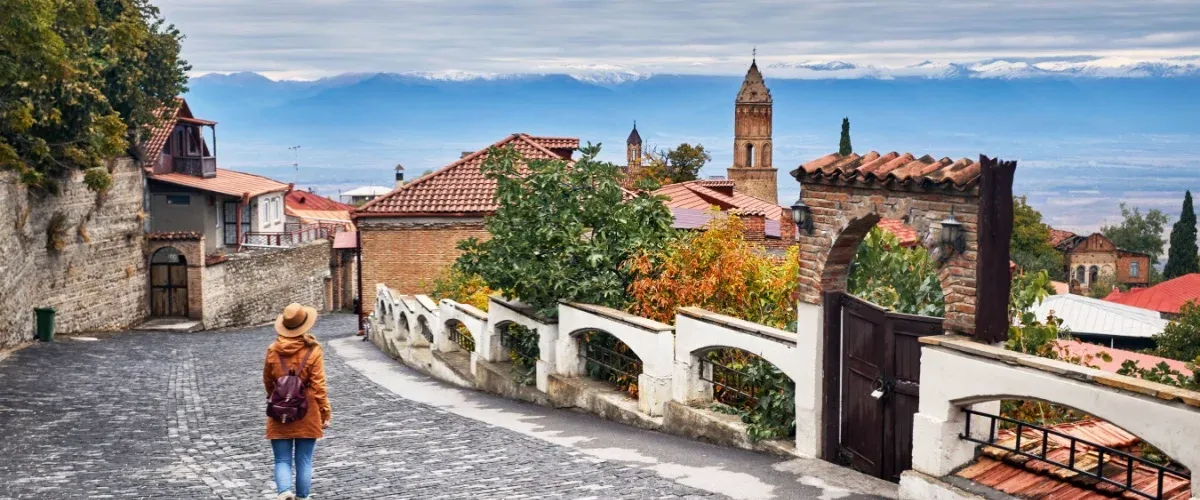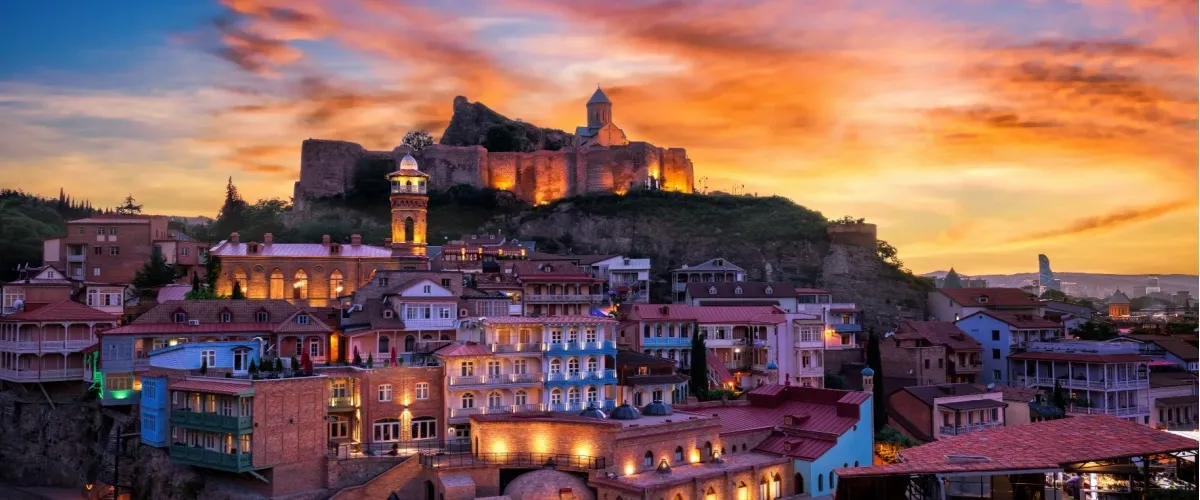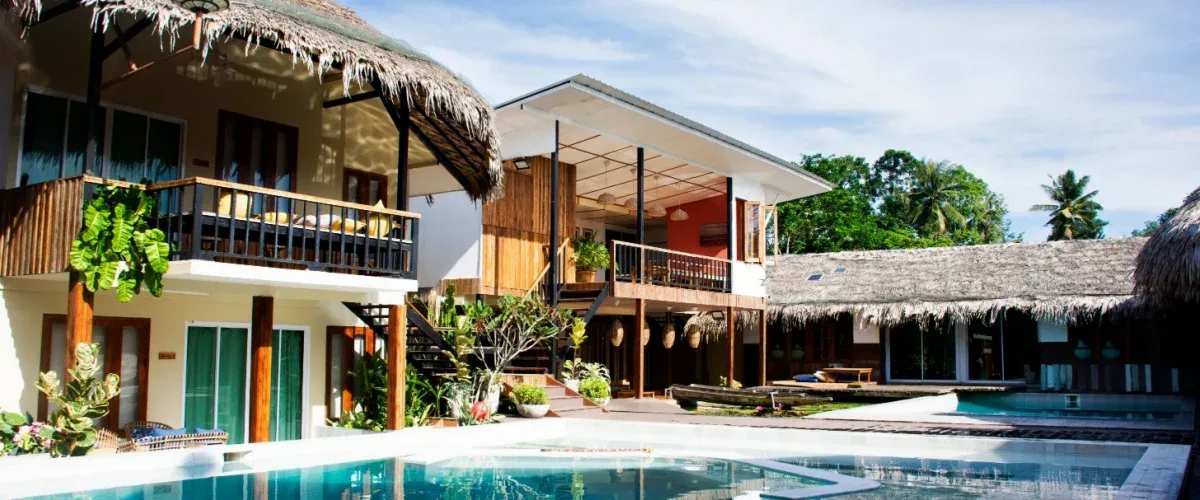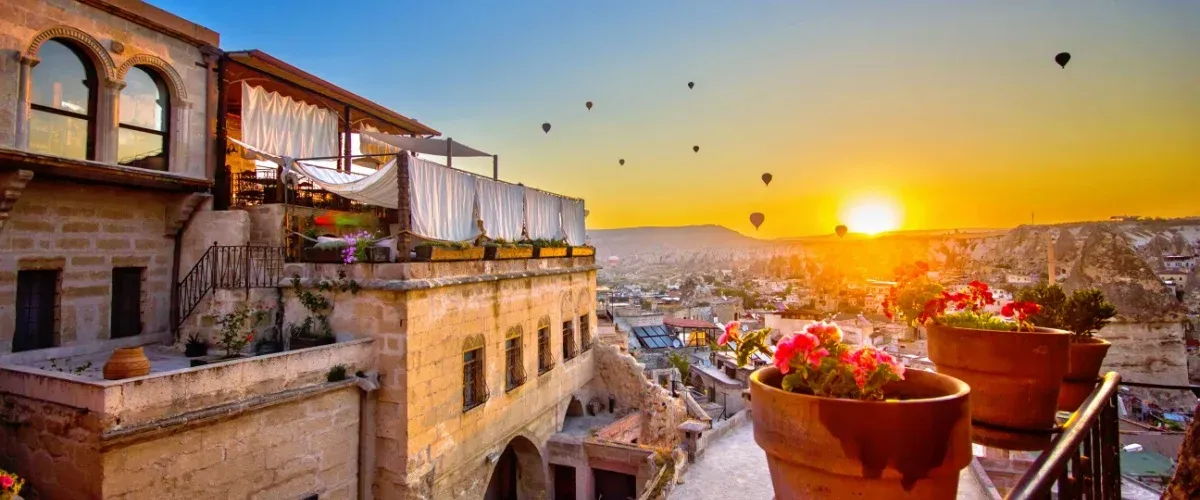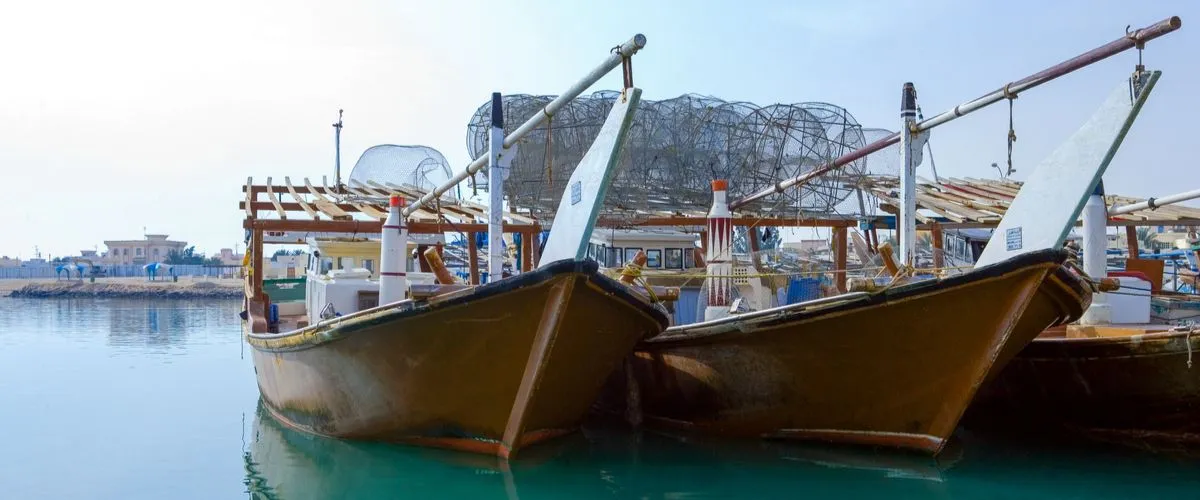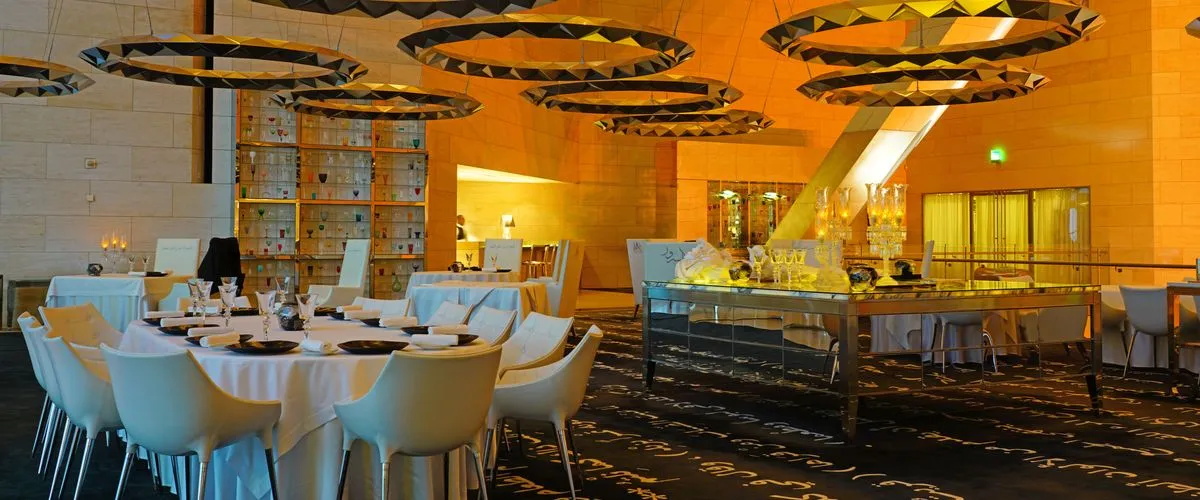Saudi Arabia, famed for its skyscrapers and modern constructions, is home to a hidden treasure trove of cultural and historical beauties that have been designated as Saudi Arabia UNESCO World Heritage sites. Beyond the current facade, the kingdom has an immense number of sites that illustrate the narrative of its historical civilizations, art, and customs. Join us on a tour as we explore the UNESCO sites in Saudi Arabia, providing a glimpse into the captivating rich legacy of the country.
Exploring 6 Saudi Arabia UNESCO World Heritage Sites: Where History Lives and Nature Thrives
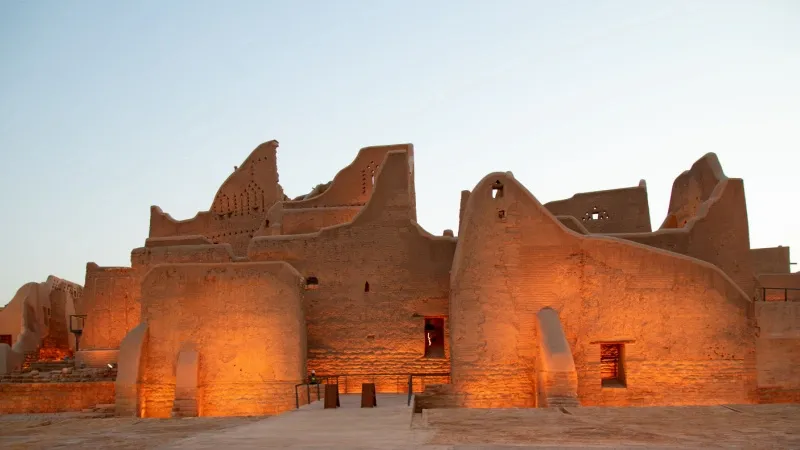
Nestled among technological wonders and soaring skyscrapers, hides a treasure trove of cultural and historical jewels that have gained the prestigious designation of Saudi Arabia UNESCO World Heritage sites. These sites weave a rich tapestry of the kingdom's bygone civilizations, creative expressions, and enduring customs, revealing a lesser-known dimension. Travel across these 6 Saudi Arabia's UNESCO sites, where each step reveals a fascinating story of the country's colorful legacy.
Let’s Explore All 6 UNESCO Heritage Sites of Saudi Arabia
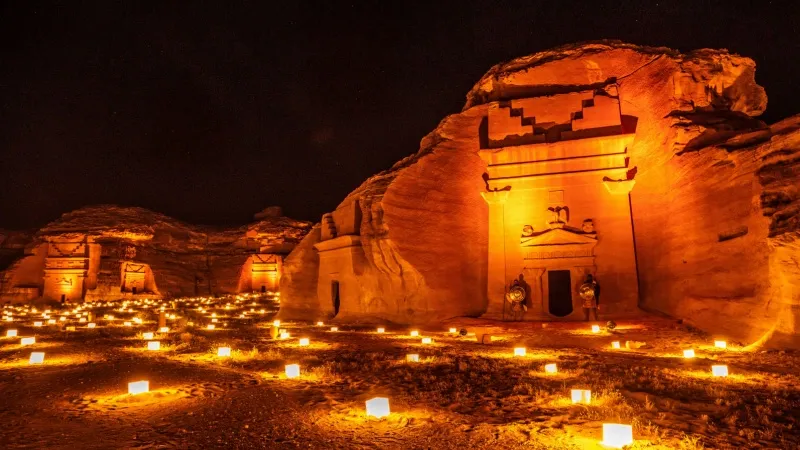
Explore Saudi Arabia's six UNESCO World Heritage Sites on an enthralling adventure. From prehistoric rock art to spectacular archaeological treasures, each site provides a glimpse into the kingdom's rich history and cultural grandeur. Here are the Saudi Arabia’s 6 UNESCO Sites:
- Historic Jeddah: The Gateway to Mecca and Medina
- At-Turaif District in Diriyah: The Cradle of a Nation
- Rock Art of the Hail Region: A Glimpse into Ancient Times
- Al-Hijr Archaeological Site (Madain Salih): Echoes of Nabatean Glory
- Al-Ahsa Oasis: Oasis of Life in the Desert
- Hima Cultural Area: Where History and Nature Converge
1. Historic Jeddah: The Gateway to Mecca and Medina

Explore the vivid history of Historic Jeddah, a city that was once the main port on trade routes from the Indian Ocean. It was a vital center channeling supplies to Makkah and greeting Muslim visitors by sea through the Gate of Makkah when it was established in the 7th century AD. Today, stroll through its small lanes and marvel at the coral-stone building that represents the distinctive style of the city's affluent merchants. Historic Jeddah is among the most fascinating tourist attractions in Saudi Arabia with ornate wooden balconies and historic alleyways telling stories of cultures colliding, making it a must-see for history buffs seeking Saudi Arabia's real charm.
Location: Historic Jeddah, Saudi Arabia
Address: Eastern shore of Red Sea, Historic Jeddah is 10 km from Jeddah city center
How to Reach: From King Abdulaziz International Airport, take a taxi or ride-sharing service for a 20-minute drive to Al-Balad.
Entry Fee: Free
Attractions: Jeddah Roshan Tower, various souks, and old houses in the region
Nearby Attractions Historic Jeddah: King Fahd Fountain, Jeddah Corniche, Nasseef House
Opening Hours of Historic Jeddah: 24/7 (Visiting during daylight hours is recommended)
Nearby Places to Stay at Historic Jeddah: Radisson Blu Hotel Jeddah Al Salam, Rosewood Jeddah
Places to Eat Near Historic Jeddah: Al-Nakheel Restaurant, Al-Baik
Things to Do in Historic Jeddah: Explore the Souq Al Alawi, admire the coral architecture, and take a walking tour.
Markets Nearby Historic Jeddah: Souq Al Alawi for souvenirs.
Suggested Read: Turkey UNESCO World Heritage Sites: Ancient Wonders and Historic Treasures
2. At-Turaif District in Diriyah: The Cradle of a Nation
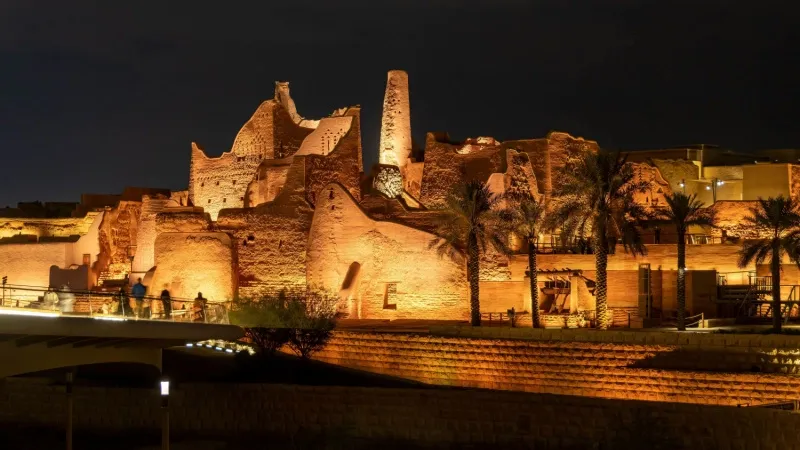
At-Turaif District in Diriyah, a UNESCO World Heritage Site, transports you to the birthplace of the Saudi kingdom. Exploring the mud-brick castles, mosques, and streets that date back to the kingdom's early days is one of the best things to do in Saudi Arabia during a historic trip to the middle east. With its distinct Najdi architectural style, this area embodies the spirit of Saudi Arabia's history. At-Turaif's citadel was a political and religious center in the 15th century, and its remains depict the story of the House of Saud's ascendancy and the spread of Salafiyya reform. This treasure trove, with its urban ensemble and undisturbed remains, connects explorers with the nation's beginnings, giving a trip through time and legacy.
Location: Diriyah, Riyadh, Saudi Arabia
Address: At Turaif is located in the heart of the Arabian Peninsula, northwest of Riyadh
How to Reach At-Turaif District: From King Khalid International Airport, take a taxi or rental car for a 30-minute drive to Diriyah.
Entry Fee: N/A
Attractions: Imam Mohammad bin Saud Mosque, Saad bin Saud Palace and At-Turaif Bath House
Nearby Attractions At-Turaif District: Salwa Palace, Turaif Historical District, Diriyah Gate
Opening Hours of At-Turaif District: Varies, check the official website for details
Nearby Places to Stay in At-Turaif District: Al Bujairi Heritage Park, Diriyah Boutique Hotel
Places to Eat Nearby At-Turaif District: Bab Al Qasr, Najd Village
Things to Do in At-Turaif District: Visit the Turaif District, explore the historic sites, and attend cultural events.
Markets Nearby At-Turaif District: Diriyah Souq for local crafts.
Suggested Read: Cappadocia Travel Guide: The Embodiment of a Fairytale Land
3. Rock Art of the Hail Region: A Glimpse into Ancient Times
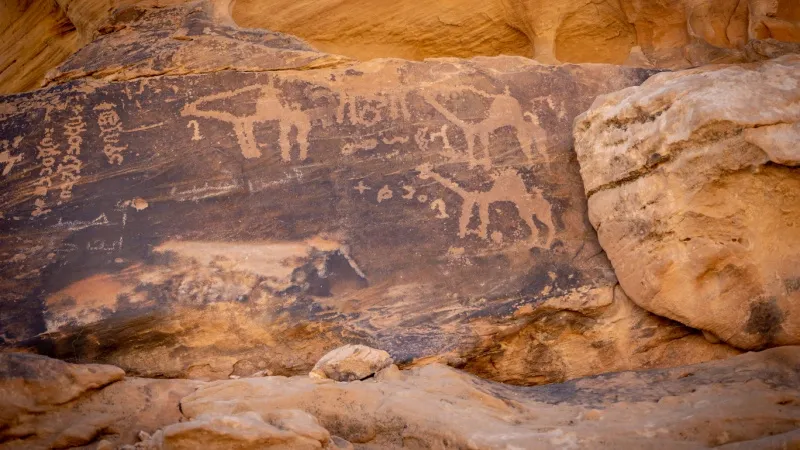
Explore the stunning rock art sites of the Hail Region, where millennia-old sculptures and paintings reveal the rich history of past civilizations. These art-filled rocks take you back in time, bringing to life hunt scenes, rituals, and daily life in long-gone tribes. Dive into our ancestors' intriguing world, inscribed into the very stones that bore testimony to their past. This experience is unique as the fourth Saudi archeological site listed on the UNESCO World historic list. Visit Jabel Umm Sinman at Jubbah, as well as Jabal al-Manjor and Raat at Shuwaymis, to see desert vistas covered with petroglyphs and inscriptions. The land, which was originally blessed by a lake, creates a strong connection to the past and provides an invaluable glimpse into ancient times.
Location: Hail Region, Saudi Arabia
Address: Rock Art in the Hail region is only 124 km from Riyadh city center in the south-west direction
How to Reach Rock Art of the Hail Region: From Hail Regional Airport, take a taxi or pre-arranged transportation for local travel.
Entry Fee: Free
Attractions: Jabal al-Major and Raat display a wide range of human and animal inscriptions spanning 10,000 years of history
Nearby Attractions Rock Art of the Hail Region: Qishlah Palace, Qara Mountain
Opening Hours of Rock Art of the Hail Region: 24/7 (Visiting during day hours is recommended)
Nearby Places to Stay in Rock Art of the Hail Region: Raoum Inn Hail, Millennium Hail Hotel
Places to Eat Nearby Rock Art of the Hail Region: Alqahwa Alkebeer, Food Palace
Things to Do in Rock Art of the Hail Region: Explore the rock art sites, hike in the Hail Mountains, and experience local culture.
Markets Nearby Rock Art of the Hail Region: Hail Traditional Souq for unique finds.
Suggested Read: Saudi Arabia Travel Guide: A Dynamic Country Worth a Visit
4. Al-Hijr Archaeological Site (Madain Salih): Echoes of Nabatean Glory
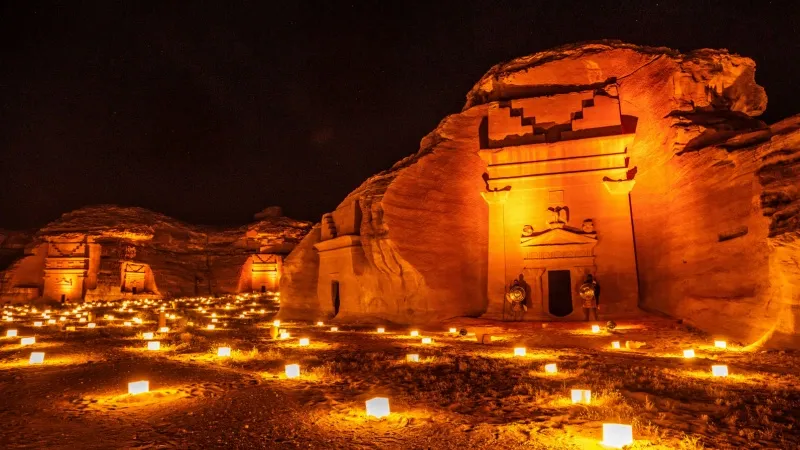
Explore the enthralling Al-Hijr Archaeological Site, also known as Madain Saleh or Hegra, which is similar to Petra's wonder and is the favorite site for tourists who come for their honeymoon in Saudi Arabia. Admire the exquisite rock-cut tombs and façade that reflect the mastery of Nabatean workmanship. The inscriptions tell of thriving trade and cultural blending in the past. Discover the mysteries of an ancient civilization that flourished along historical pathways as silent stone monuments tell their story. Al-Hijr was designated as Saudi Arabia's first UNESCO World Heritage Site. The delicate features of the tomb entrances and the clean surfaces of the 111 façades demonstrate the expertise of ancient masons. Explore the intricately carved and uniquely modeled tomb façades, which are accessible via a central gate. Witness the uneven yet interesting carving on the inside, a monument that shows Nabatean architectural talent.
Location: Al-Hijr (Madain Salih), Al Ula, Saudi Arabia
Address: Visitors may easily reach Hegra from Al Ula, Al Madinah Region, or Al Hejaz, by hiring a private cab from Al Ula Airport or Madinah City.
How to Reach Al-Hijr Archaeological Site: From Prince Abdul Majeed bin Abdulaziz Domestic Airport, take a taxi for a 25-minute drive to Al Ula.
Entry Fee: Varies, check the official website for details
Attractions: Nabataean inscriptions, Qasr al Bint, Qasr al Farid, Jebel Ithlib
Nearby Attractions Al-Hijr Archaeological Site: Al-Ula Old Town, Elephant Rock, Maraya Concert Hall
Opening Hours of Al-Hijr Archaeological Site: Varies, check the official website for details
Nearby Places to Stay in Al-Hijr Archaeological Site: Shaden Resort, Sahary Al Ula Camp
Places to Eat Nearby Al-Hijr Archaeological Site: Al Ula Oasis Restaurant, Madakhil Restaurant
Things to Do in Al-Hijr Archaeological Site: Explore the rock-cut tombs, visit the ancient wells, and attend cultural events.
Markets Nearby Al-Hijr Archaeological Site: Al Ula Traditional Souq for local crafts.
Suggested Read: Unveil The Happening Places to Visit in Taif, Saudi Arabia
5. Al-Ahsa Oasis: Oasis of Life in the Desert

Amidst the arid landscape, discover Al-Ahsa Oasis, a lush haven nurtured by ancient wisdom. Explore the intricate system of canals and palm groves, wells, springs, historical buildings, archaeological sites, and a drainage lake that have sustained through generations. These remains represent most probably the very first human settlement in the Gulf region of the Neolithic Era. Stroll through Al-Hofuf's historic streets, where traditional architecture blends seamlessly with nature. Just imagine yourself in the middle of the sand sea among more than 3 million palm trees which make Al-Ahsa the greenest place in Saudi Arabia. Some of the best types of dates are produced here including the famous Al-khalasah date. Not only this but in ancient times, this used to be the entry point for Makkah pilgrim caravans. Immerse yourself in a living testament to human resilience and harmony with the environment.
Location: Al-Ahsa Oasis, Eastern Province, Saudi Arabia
Address: Al-Ahsa, Eastern Province, Saudi Arabia
How to Reach Al-Ahsa Oasis: From King Fahd International Airport, take a taxi or pre-arranged transportation for a 1-hour drive to Al-Ahsa.
Entry Fee: Free
Attractions: Springs, Antiquities, and 12 cultural landscapes
Nearby Attractions Al-Ahsa Oasis: Ibrahim Palace, Al-Qara Mountain, Al-Jawhara Stadium
Opening Hours of Al-Ahsa Oasis: 24/7 (Visiting during daylight hours is recommended)
Nearby Places to Stay in Al-Ahsa Oasis: Coral Al Ahsa Hotel, Asfar Resorts
Places to Eat Nearby Al-Ahsa Oasis: Qarya Al Naft, Abdul Mohsen Al Hamadi Al-Ahsa
Things to Do in Al-Ahsa Oasis: Explore the palm groves, visit the ancient souqs, and learn about falaj irrigation.
Markets Nearby Al-Ahsa Oasis: Al-Ahsa Heritage Souq for local products.
Suggested Read: 8 Forts in Saudi Arabia: Exploring the Classical Edifices for a Majestic Fairytale Experience
6. Hima Cultural Area: Where History and Nature Converge
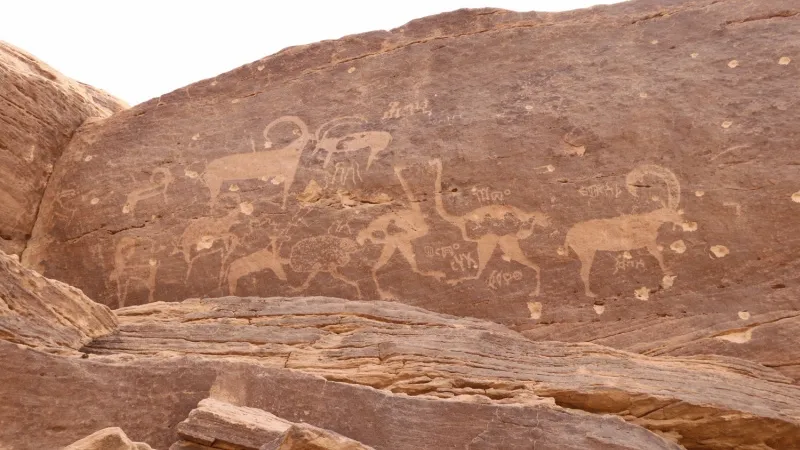
Enter the enthralling world of the Hima Cultural Area, a real wonder in the heart of Saudi Arabia is in the list of Middle East attractions that people must explore on their cultural tour to Saudi. This UNESCO World Heritage Site features a large collection of rock art, offering a vivid peek into the lives of our forefathers from 7,000 years ago. You'll be transported through time as you explore Najran's rocky landscapes, marveling at sculptures depicting daily life, hunting tactics, and even ancient travelers' inscriptions in languages like Musnad, South Arabian, Thamudic, Greek, and Arabic. In various archeological surveys, researchers have found things like cairns, stone structures, interments, stone tool scatters, and ancient wells. The Bi'r im wells or the Bi’r Ḥimā, which date back at least 3,000 years, continue to provide freshwater, while the oldest known toll station on an important ancient desert caravan route tells the narrative of travelers and armies. Uncover a treasure trove of historical significance that connects us to ages long past, all while embracing the natural beauty and creativity of this captivating site.
Location: Al Hissa Governorate, Najran, Saudi Arabia
Address: Located in a mountainous and arid area 200 km from the Najran city
How to Reach Hima Cultural Area: From Najran Airport, the site is best reached by taxi or rental car, approximately a 2-hour drive.
Entry Fee: Free
Attractions: Well of Bir im and old inscriptions and petroglyphs
Nearby Attractions Hima Cultural Area: Al-Ukhdood Archaeological Site, Al-Aan Palace
Opening Hours of Hima Cultural Area: Open daily from sunrise to sunset
Nearby Places to Stay in Hima Cultural Area: Najran Hotel, Al Aqeeq Hotel
Places to Eat Nearby Hima Cultural Area: Al Na'ashah Restaurant, Al-Mazroof Restaurant
Things to Do in Hima Cultural Area: Explore rock art, enjoy desert landscapes, stargaze
Markets Nearby Hima Cultural Area: Najran Souq, Al-Ukhdood Souq
You can get a glimpse of rich heritage, human history, culture, and nature through the fascinating landmarks of Saudi Arabia UNESCO Heritage Sites. This journey to the sites is a golden chance to witness Saudi Arabia’s most remarkable places, including historical buildings, archaeological sites, natural landscapes, cultural landmarks, and more learn from the past and contribute to sharing rich history with future generations. Through one of your best Saudi Arabia tour packages, you will get an opportunity to experience Saudi’s golden past.
FAQs
UNESCO World Heritage Sites in Saudi Arabia are culturally, and historically important areas recognized by UNESCO for their universal importance. They provide information on the country's historical culture, art, and traditions.
The UNESCO World Heritage designation recognizes and protects universally significant monuments, conserving them for present and future generations.
Six UNESCO World Heritage Sites in Saudi Arabia give insights into the country's cultural, historical, and environmental legacy.
The 6 UNESCO sites in Saudi Arabia are:
- Historic Jeddah
- At-Turaif District in Diriyah
- Rock Art of the Hail Region
- Al-Hijr Archaeological Site (Madain Salih)
- Al-Ahsa Oasis
- The Hima Cultural Area
The UNESCO World Heritage Site of Historic Jeddah highlights the city's history as a harbor for Mecca and Medina pilgrims, with coral-stone structures and narrow alleyways.
The At-Turaif District is located in Diriyah, Riyadh, Saudi Arabia, and is notable for being the birthplace of the Saudi state.
Visitors visiting the Hail Region's Rock Art may expect to discover millennia-old sculptures and paintings of scenes from bygone civilizations.
The Nabatean tombs and façade at Al-Hijr Archaeological Site (Madain Salih) provide insights into ancient trade and civilization.
Al-Ahsa Oasis flourishes in the middle of a desert region thanks to its complicated system of canals and palm plantations that support life. It is a living example of human persistence and a peaceful connection with the environment.
The Hima Cultural Area in Najran provides visitors with ancient rock art showing themes from daily life, hunting, and spirituality.

